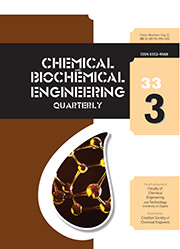In this study, the addition of carbon nanotubes (MWCNT) and modified carbon nanotubes (MWCNT-COOH) in the range of 0.5 wt. % to 5 wt. % in polyamide (PA) obtained as a residue upon 3D printing, was investigated. PA and nanocomposite samples were prepared by melt mixing. PA/MWCNT and PA/MWCNT-COOH nanocomposites were characterized by differential scanning calorimetry (DSC), thermogravimetric analysis (TGA), THB thermal conductivity determination method, electrochemical impedance spectroscopy (EIS), and tensile test. Results of DSC analysis showed that both types of carbon nanotubes (MWCNTs) acted as nucleation centres of PA matrix, but had no effect on the order of the crystalline structure. Due to the polar nature of the surface and better dispersion, MWCNT-COOH filler accelerated PA crystallization more significantly compared to MWCNT. Due to the presence of nanofiller, the PA chains had limited motion space, which interfered with the crystallization process of the matrix. The thermal stability of the PA matrix increased with the addition of both MWCNT and MWCNT-COOH fillers. Higher thermal conductivity was achieved with the addition of MWCNT-COOH filler compared to the addition of MWCNT. The results of the tensile test showed that with the addition of both types of MWCNT fillers in the PA matrix, the modulus of elasticity and yield stress had reduced, but the yield strain increased. Results of the EIS showed that MWCNT nanofiller had not changed the electrical conductivity regardless of modification.
Sažetak
Dio od

 Chemical & biochemical engineering quarterly : the international publication of "Kemija u industriji" : the official journal of Croatian Society of Chemical Engineers, Faculty of Chemical Engineering and Technology University of Zagreb, Slovenian Chemical Society, and Austrian Association of Bioprocess Technology : 33,3(2019) / Co-Editors-in Chief: M. Rogošić, B. Zelić.
Chemical & biochemical engineering quarterly : the international publication of "Kemija u industriji" : the official journal of Croatian Society of Chemical Engineers, Faculty of Chemical Engineering and Technology University of Zagreb, Slovenian Chemical Society, and Austrian Association of Bioprocess Technology : 33,3(2019) / Co-Editors-in Chief: M. Rogošić, B. Zelić.